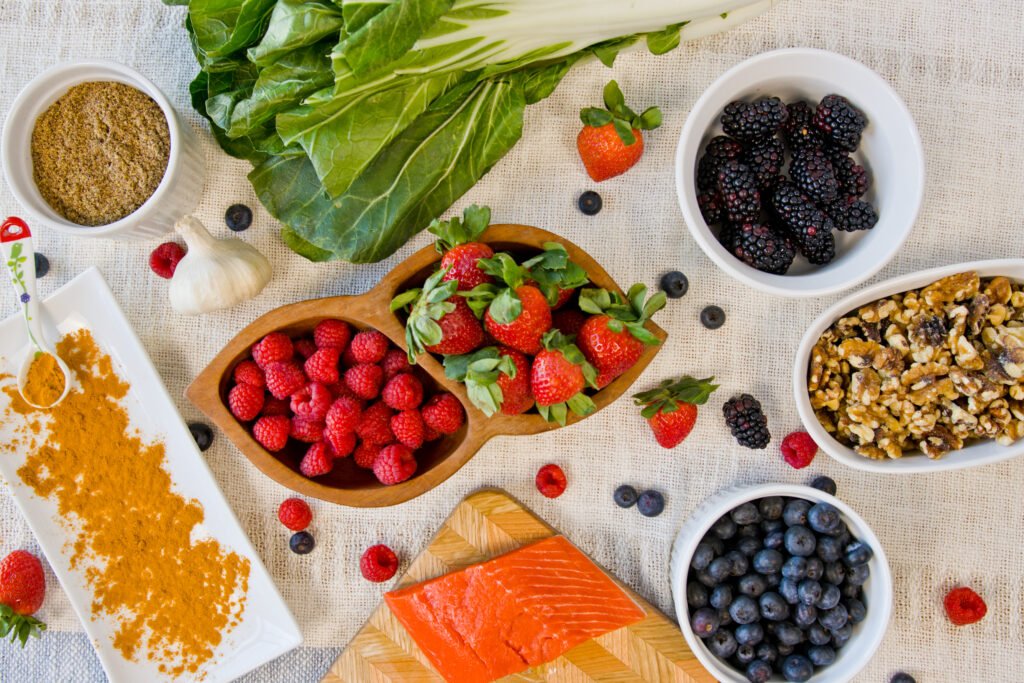What is Intuitive Eating:
Eating with Intention to Nourish Your Body and Mind
Let’s be real—diet culture loves to give out strict rules and crazy concoctions, making food way more complicated and confusing than helpful. But what if you could actually enjoy eating without obsessing over every bite? That’s where intuitive eating comes in. It’s not about strict rules or feeling guilty—it’s about listening to your body, honoring your hunger, and ditching diet culture. In this post, I’m breaking down what intuitive eating is, why it works, and how to start truly tuning in to what your body really needs.
What is Intuitive Eating?
Intuitive eating stands in stark contrast to traditional dieting. Created by dietitians Evelyn Tribole and Elyse Resch, it encourages people to stop obsessing over food rules and instead listen to their bodies. The premise is actually pretty simple: Eat when you’re hungry, stop when you’re full, and enjoy what you eat while paying attention to how different foods make you feel.
The 10 Key Principles
Intuitive eating is built on ten key principles that help you tune into your body and rebuild trust with your hunger and fullness cues.
- Reject the Diet Mentality: Say goodbye to diet culture and the endless cycle of restriction.
- Honor Your Hunger: Tune into your body’s hunger cues. Feed your body adequately to prevent over-hunger and its side effects.
- Make Peace with Food: Grant yourself unconditional permission to eat. No guilt.
- Challenge the Food Police: Silence those guilt-inducing thoughts about food choices.
- Respect Your Fullness: Listen to your body’s signals that indicate you’re satisfied.
- Discover the Satisfaction Factor: Take pleasure in eating what you love.
- Honor Your Feelings Without Using Food: Address your emotions with kindness rather than eating.
- Respect Your Body: Accept your genetics and unique shape. You are the the only you, embrace it!
- Exercise – Feel the Difference: Focus on movement that feels good, and how you feel afterwards, rather than focus on calorie-burning.
- Honor Your Health with Gentle Nutrition: Make food choices that honor your health, culture and taste buds while tuning in to what your body needs.
Research-Backed Benefits
Intuitive eating isn’t just a buzzword—it’s backed by solid research. Studies show that people who eat intuitively are less likely to struggle with disordered eating and tend to have a healthier mindset around food. Research even links it to better cholesterol levels, a more positive relationship with food, and higher self-esteem.
Hunger & Satiety Scale:
Using a Hunger & Satiety Scale is a great way to tune into your body’s hunger cues and make choices that feel more aligned with what you need. Here’s a guide to help you understand those signals:

How to Get Started with Intuitive Eating
Getting started with intuitive eating is all about tuning into your body and breaking free from diet rules:
- Notice Your Habits: Pay attention to how and why you’re eating—no judgment, just curiosity.
- Check In With Yourself: Keep a simple food journal (not for counting calories!) to see how different foods make you feel.
- Be Kind to Yourself: Let go of past dieting guilt and focus on nourishing your body with what it truly needs.
- Honor Your Hunger: Don’t ignore your body’s hunger signals—feed yourself when you’re hungry, not when the clock says it’s time.
- Savor Your Food: Slow down and enjoy your meals! The more you focus on taste and texture, the more in tune you’ll become with your body’s cues.
Remember, intuitive eating isn’t a quick fix—it’s a process of rebuilding trust with your body, one meal at a time.
Thrive’s Final Thoughts
Embracing intuitive eating can totally transform your relationship with food and your body, helping you find more joy and satisfaction with every bite. It’s all about being present, showing yourself some love, and enjoying food without the weight of diet culture. Ready to kickstart your journey? I’m here for you for personalized guidance or dive into more resources here to learn more.















































